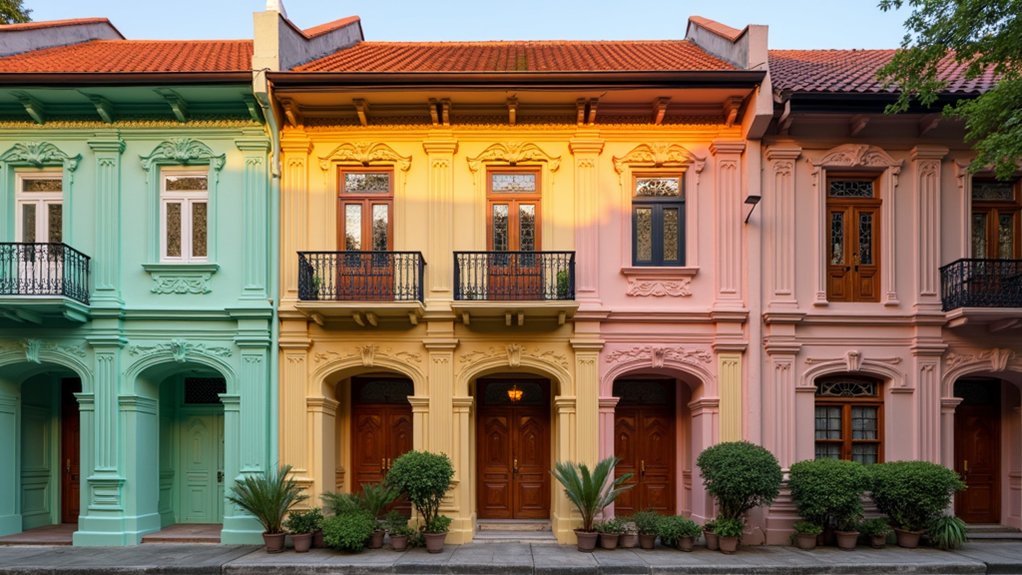How did a building typology mandated by colonial planning ordinances become one of Singapore’s most recognizable architectural heritage assets?
Shophouses, constructed primarily between the 1840s and 1960s, emerged from Stamford Raffles’ 1822 planning ordinances that defined a specific template: two-storey structures with business on the ground floor, residential space above, and mandatory covered pedestrian walkways known as five-foot ways.
These buildings, influenced by Chinese courtyard houses and adapted for Singapore’s tropical climate, initially featured minimal decoration, narrow widths, and local clay tile roofs with symmetrical facades. Over time, architectural styles diversified as growing wealth and changing tastes introduced ornate details and new materials.
The typical shophouse design incorporates a narrow street frontage with a deep floor plan, party walls for fire resistance, and the characteristic covered five-foot way running along the front.
Later iterations display decorative facades, Peranakan tiling, stucco work, and ornate windows or doors, while features such as air wells, internal courtyards, and timber louvres provide ventilation and natural light across the two to three stories that comprise most structures.
Conservation initiatives led by the Urban Redevelopment Authority from the late 1980s, inspired partly by European heritage models, granted conservation status only to properties with distinct architectural, historical, or cultural value.
Conservation areas now include Chinatown, Little India, Kampong Glam, and Bukit Pasoh, among others, with strict restoration guidelines preserving facades, roofs, and external features while permitting adaptive reuse within established parameters. Heritage laws require clearance for renovations and mandate preservation of original elements such as building colours and paint to retain historical integrity.
Shophouses are classified as commercial, residential, or mixed-use for regulatory purposes, with commercial units carrying no ownership restrictions while residential or mixed-use units, classified as landed property, remain subject to local purchase regulations and approval requirements for foreign buyers. Foreign investors purchasing residential shophouses must obtain explicit approval from the Singapore Land Authority as these properties fall under landed property regulations.
Today, many shophouses function as boutique hotels, restaurants, creative spaces, or offices, supporting economic vitality through adaptive reuse that blends historical preservation with modern function.
Preserved shophouse districts draw tourists and boost local business sectors, with conservation driven partly by increasing property values and the premium placed on heritage real estate within Singapore’s urban landscape. Over 7,200 properties hold conservation status across 100 conservation areas, serving as cultural anchors amid a rapidly evolving cityscape.





